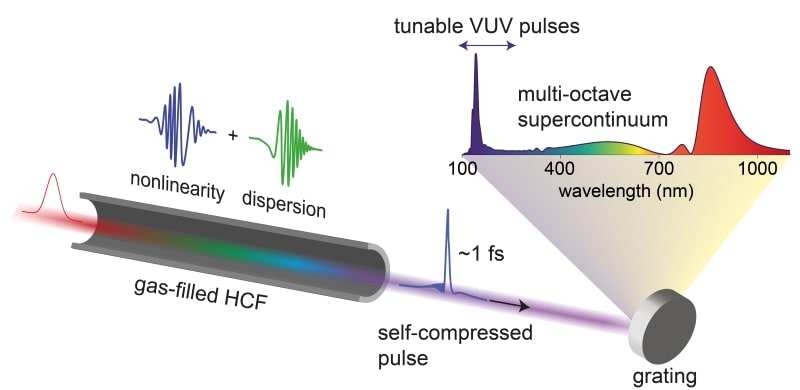20 May 2019
The team of scientists consists of Associate Professor John Travers, Postgraduate Research Student Teodora Grigorova and Research Associates Christian Brahms and Federico Belli.
Solitons are a central concept in nonlinear physics, and are particle-like nonlinear pulses that maintain their shape upon propagation and interaction. They appear in many areas of physics, including plasmas, magnetic circuits and the atmosphere.
While optical solitons have been demonstrated before in optical fibres, the optical solitons demonstrated in gas-filled hollow capillary fibres by this new study have by far the highest energy ever demonstrated.
Furthermore, the new approach used for these optical solitons allows for the creation of extremely short optical pulses called optical attosecond pulses. This is the second ever demonstration of such pulses worldwide, with a new method for generating them that is much simpler and more robust than previously possible.
Dr John Travers and his colleagues have also produced a tuneable ultrafast light-pulse source across the vacuum ultraviolet spectral region.
Dr John Travers said: “Currently the only reasonable way to access this spectral region is with huge building-scale synchrotrons and free-electron lasers which are up to 1km long and can cost billions of pounds.
“Our table-top source is a fraction of the size and cost, and yet delivers even brighter pulses than produced in state-of-the-art free electron lasers.”
These pulses are useful for precision metrology of fundamental physics as well as probing the motion of electrons and molecules in real-time, to make molecular and atomic movies.
Understanding these processes unlocks progress in basic science, but also lays the foundation for progress in medicine and materials engineering for advanced applications, such as the semiconductor industry.
This ground-breaking research, funded by Professor Travers’ European Research Council Starting Grant, was enabled by making use of soliton effects, which were first observed 800m from Heriot-Watt University in the Union Canal in 1834.
The complete research paper is available here.















